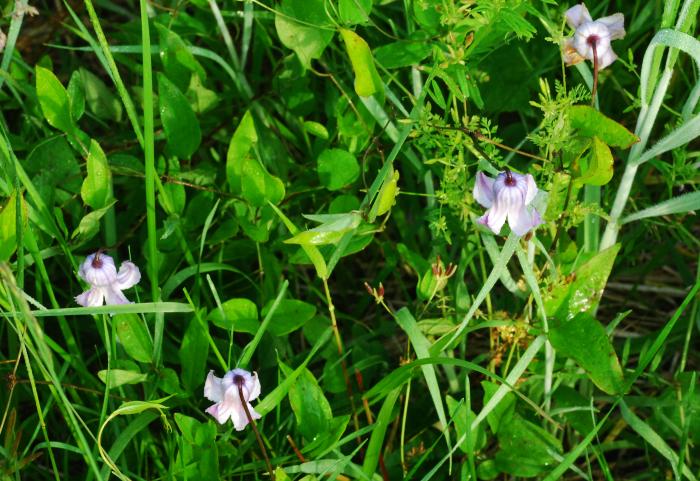Clematis crispa L.
Swamp Leather Flower

Native
CC = 8
CW = -3
MOC = 8
© SRTurner
Clematis crispa L.Swamp Leather Flower | |
 |
Native CC = 8 CW = -3 MOC = 8 |
© SRTurner |
|
Family - Ranunculaceae Habit - Twining, perennial forb. Stem - Twining through other vegetation, to 3 m. Nodes with a thickened collar of tissue joining opposite petioles.
Leaves - Opposite, pinnately 5-7 compound or bipinnate, petiolate, herbaceous in texture. Leaflets usually undivided but sometimes lobed, otherwise entire, glabrous, the upper surface green, the undersurface paler but not glaucous.
Flowers - Solitary, urn-shaped, nodding. Sepals 4, petalloid, 3-4 cm long with strongly reflexed tips, leathery, pinkish to bluish-purple, with 3-5 mm wide crisped margins, externally pubescent, internally glabrous. Petals absent. Stamens and pistils numerous.
Fruits - In clusters, with achene beaks ascending to spreading. Achenes with beaks 2.0-3.5 cm long.
Flowering - April - August. Habitat - Bottomland and mesic forests, swamps, wet ditches. Origin - Native to the U.S. Lookalikes - Clematis pitcheri, C. viorna, C. versicolor. Other info. - This attractive species is uncommon in Missouri, recorded mostly from a handful of counties in and near the Bootheel. Missouri lies at the northwestern extent of its range, which extends easward and southward to the coast in both directions. Since the plant twines and sprawls through other vegetation, it is usually inconspicuous except when in flower. It is easily identified by the shape of the flower and the presence of the characteristic wide, crisped margins of the sepals. Photographs taken near Neelyville, Butler County, MO, 5-21-2014, and at Duck Creek Conservation Area, Wayne County, MO, 5-13-2016 and 6-15-2023 (SRTurner). |